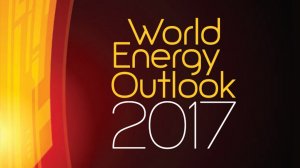Solar to power ahead as it emerges as ‘cheapest’ source of generation
The World Energy Outlook 2017, released by the International Energy Agency (IEA) in London on Tuesday, presents a base case scenario that foresees the world’s growing energy needs being met increasingly by renewables and natural gas over the coming 25 years, as “coal strikes out” and nuclear’s prospects dim.
This base case, referred to as ‘New Policies Scenario’, anticipates that renewables will capture two-thirds of global investment in power plants to 2040, as they become the least-cost source of new generation for many countries. Since 2010, costs of new solar photovoltaics (PV) have fallen by 70%, while wind costs have declined by 25%.
The publication projects that fast-declining costs will turn solar PV into the cheapest source of new electricity generation and further accelerate the technology’s deployment. Already in 2016, growth in solar PV capacity was larger than for any other form of generation.
“Solar is forging ahead in global power markets as it becomes the cheapest source of electricity generation in many places, including China and India,” IEA executive director Dr Fatih Birol avers.
Global energy demand is projected to be 30% higher by 2040 and to be met primarily through a combination of renewables, natural gas and energy-efficiency improvements.
“Renewable sources of energy meet 40% of the increase in primary demand and their explosive growth in the power sector marks the end of the boom years for coal,” the publication states.
Natural gas use, meanwhile, rises by 45% to 2040 under the New Policies Scenario.
The publication argued that the shale oil and gas revolution in the US continues and that, by the the mid-2020s, the US is projected to become the world’s largest liquefied natural gas exporter and a net oil exporter by the end of that decade.
The outlook for coal, by contrast, is modelled as being weak, particularly in the absence of large-scale carbon capture and storage.
The IEA notes that, since 2000, coal-fired power generation capacity has grown by nearly 900 GW, but the IEA’s model is for net additions from 2017 to 2040 to be only 400 GW, with many of these plants already under construction.
“The outlook for nuclear power has dimmed since last year’s outlook, but China continues to lead a gradual rise in output, overtaking the US by 2030 to become the largest producer of nuclear-based electricity.”
The rapid deployment and falling costs of clean-energy technologies is held up in the World Energy Outlook 2017 as one of four large-scale shifts under way in the global energy system.
The other three include: a growing electrification of energy; a shift to a more services-oriented economy and a cleaner energy mix in China; and the resilience of shale gas and tight oil in the US.
“Electricity is the rising force among worldwide end-uses of energy, making up 40% of the rise in final consumption to 2040 – the same share of growth that oil took for the last 25 years,” the publication states.
However, the IEA also says it is too early to write the “obituary of oil”, with global oil demand projected to continue to grow to 2040, although at a steadily decreasing pace.
Fuel efficiency and rising vehicle electrification will bring a peak in oil used for passenger vehicles, even with a doubling of the car fleet to two-billion vehicles. However, other sectors, namely petrochemicals, trucks, aviation, and shipping, drive up oil demand to 105-million barrels a day by 2040.
The New Policies Scenario still projects that global energy-related carbon dioxide (CO2) emissions will increase slightly to 2040, an outcome that is insufficient to avoid the severe impacts of climate change.
However, it points to positive signs, with projected 2040 emissions in the New Policies Scenario being lower by 600-million tonnes than was the case in the 2016 outlook.
The publication also offers insight into a ‘Sustainable Development Scenario’, under which CO2 emissions reduce in line with the objectives of the Paris Agreement, while also tackling air pollution and achieving universal energy access.
To achieve the scenario, the IEA says 15% additional investment is required to 2040, with two-thirds of energy supply investment going to electricity generation and networks.
Comments
Press Office
Announcements
What's On
Subscribe to improve your user experience...
Option 1 (equivalent of R125 a month):
Receive a weekly copy of Creamer Media's Engineering News & Mining Weekly magazine
(print copy for those in South Africa and e-magazine for those outside of South Africa)
Receive daily email newsletters
Access to full search results
Access archive of magazine back copies
Access to Projects in Progress
Access to ONE Research Report of your choice in PDF format
Option 2 (equivalent of R375 a month):
All benefits from Option 1
PLUS
Access to Creamer Media's Research Channel Africa for ALL Research Reports, in PDF format, on various industrial and mining sectors
including Electricity; Water; Energy Transition; Hydrogen; Roads, Rail and Ports; Coal; Gold; Platinum; Battery Metals; etc.
Already a subscriber?
Forgotten your password?
Receive weekly copy of Creamer Media's Engineering News & Mining Weekly magazine (print copy for those in South Africa and e-magazine for those outside of South Africa)
➕
Recieve daily email newsletters
➕
Access to full search results
➕
Access archive of magazine back copies
➕
Access to Projects in Progress
➕
Access to ONE Research Report of your choice in PDF format
RESEARCH CHANNEL AFRICA
R4500 (equivalent of R375 a month)
SUBSCRIBEAll benefits from Option 1
➕
Access to Creamer Media's Research Channel Africa for ALL Research Reports on various industrial and mining sectors, in PDF format, including on:
Electricity
➕
Water
➕
Energy Transition
➕
Hydrogen
➕
Roads, Rail and Ports
➕
Coal
➕
Gold
➕
Platinum
➕
Battery Metals
➕
etc.
Receive all benefits from Option 1 or Option 2 delivered to numerous people at your company
➕
Multiple User names and Passwords for simultaneous log-ins
➕
Intranet integration access to all in your organisation





















